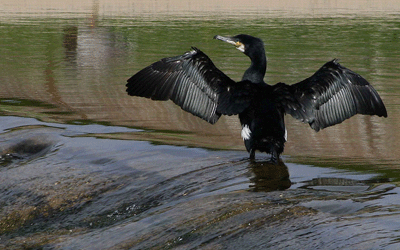The journey to sea, from freshwater is a particularly vulnerable time and the impact of in-river predation may be significant. The number of smolts leaving rivers is directly related to the number of returning adults. By this stage, young salmon preparing for the marine environment have left their natal streams and are effectively ‘irreplaceable’.
Maximising the number of healthy wild smolts leaving our rivers is a crucial means of ensuring sustainable populations of salmon and sea trout. In addition, survival at sea is at historic lows, and more needs to be done to ensure that as many adult spawners return to our rivers. This includes protection from seal predation, particularly within rivers.
Predation of smolts may be by piscivorous (fish eating) birds, other fish species, or mammals.  Predation of returning adults may be by marine mammals, such as dolphins or seals, and seals are regularly observed entering rivers and can swim many miles upstream in order to eat wild salmon.
Predation of returning adults may be by marine mammals, such as dolphins or seals, and seals are regularly observed entering rivers and can swim many miles upstream in order to eat wild salmon.
What are we doing?
Fisheries Management Scotland have established a Predation Committee to inform and coordinate our activities relating to management of the impacts of predation and to ensure that District Salmon Fishery Boards have a range of appropriate management tools to ensure that our iconic freshwater and migratory fish species are protected where necessary.
Fisheries Management Scotland, and our member District Salmon Fishery Boards and Fisheries Trusts wish to see:
- Availability of accessible, affordable and effective tools for fisheries managers to reduce predation pressure on migratory fish, including proportionate targeted and effective control of predators;
- Wider understanding and acknowledgement of the impact of predation on migratory fish populations;
- Wider understanding and acknowledgement of the socio-economic impact of predation;
- Recognition of the importance of migration ‘pinch-points’ (e.g. barriers) where the impact of predation may be magnified, in the consenting and licensing process;
- Prioritisation of research effort into quantifying the impact of predation and developing appropriate and affordable mitigation and protection measures, including the development of effective deterrents, to safely prevent seals from entering rivers.
